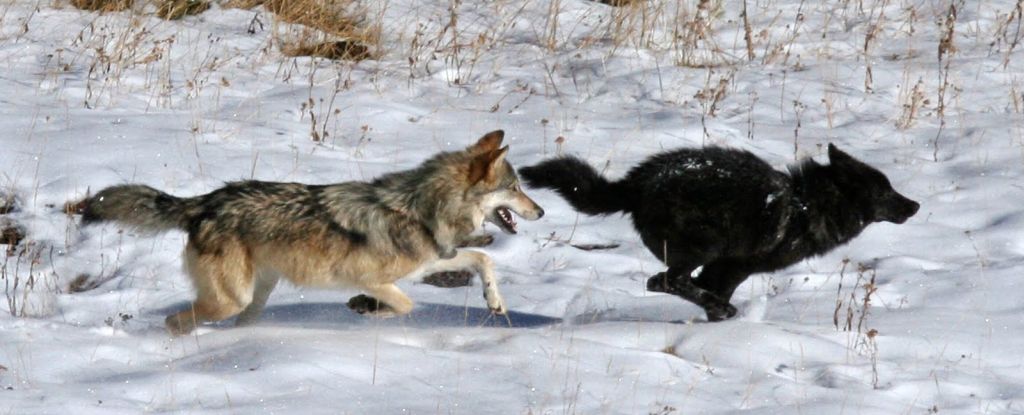Guessing the color of a gray wolf’s fur seems like child’s play. But the canines, whose habitats are spread across North America and Eurasia, aren’t always truly gray.
On the North American continent in particular, there are more wolves with dark, black-colored fur the further south you go. The phenomenon has long been unexplained, but now scientists have determined that one of the biggest drivers of natural selection is the culprit: disease.
An international team led by ecologist Sarah Cubaynes of the University of Montpellier in France has found that this is often deadly Canine distemper virus is the trigger that spawns a higher number of black-furred wolves (wolf).
“Black wolves are absent or very rare in most parts of the world, but in North America they are widespread in some areas and absent in others.” explains biologist Tim Coulson of Oxford University.
“Scientists have long wondered why. We now have an explanation based on wolf surveys across North America and models motivated by exceptional data collected by co-authors working at Yellowstone.”
Evolutionary pressures can lead to some peculiar consequences, especially when it comes to diseases. Some individuals may be more likely to survive due to the presence of genes that confer resistance to this disease. The survivors then produce offspring with these genetic variations, and a population’s genetic profile can change over time.
However, the genetic configurations that confer resistance do not always have a single function. As we recently learnedgenetic variants that conferred resistance to the black plague also increase susceptibility to autoimmune diseases like rheumatoid arthritis, meaning we’re still feeling its effects centuries later.
In these wolves, coat color is determined by a gene called CPD103, which historically made their coats gray. However, a CPD103 mutation occurred in dogs, which passed to wolves and produced a black coat.
Each wolf has two copies of CPD103, one inherited from each parent. not how red hair in humansbut it only takes one copy of the black coat gene to produce a black coat.
Scientists suspected that the canine distemper virus may play a role in the numbers of black-coated wolves across North America, since the region of DNA where CPD103 resides is also involved in encoding a protein that protects against lung infections such as canine distemper.
This would mean that if black-coated wolves are more likely to survive the disease, they will breed and pass their CPD103 variant to their young.
So the team set out to test this hypothesis. Researchers analyzed 12 wolf populations across North America to determine if canine distemper was present antibody – a sign of having had the virus and surviving it – strongly correlated with black-coated wolves.
They found that wolves with the antibodies were actually more likely to have black coats — particularly in older wolves. Black wolves were also more common in areas where outbreaks had occurred.
Next, the team examined 20 years of wolf population data from Yellowstone National Park, where wolves were reintroduced in the 1990s.
There the population consists of 55 percent gray wolves and 45 percent black wolves. Of these black wolves, only 5 percent had two examples of the black-coated CPD103 variant. This suggests that wolves that choose opposite-colored mates have a better chance of reproductive success and their offspring will survive canine distemper.
However, it only works in regions where distemper outbreaks have occurred. According to the team’s mathematical modeling, the competitive advantage of choosing an opposite color partner disappears when canine distemper is not a problem.
The research not only provides an intriguing reason for the increased distribution of black wolves in some areas, but also provides a tool to study historical distemper outbreaks and disease resistance.
The team notes that their findings likely apply to a wide range of species. In a variety of insects, mammals, amphibians, reptiles, and birds, color variation can be associated with disease resistance; This coloration can serve as a signal to help animals choose mates that will give their offspring a survival advantage.
“If coloration is genetic and disease resistance is heritable and associated with coloration, preference for a mate of a particular color increases fitness by maximizing the chances of producing resistant offspring in environments with common and sufficiently virulent pathogens.” write the researchers in their paper.
“We may have grossly underestimated the role of pathogens in generating the diversity of morphological and behavioral traits observed in nature.”
Isn’t that a fascinating idea?
The research was published in Science.





